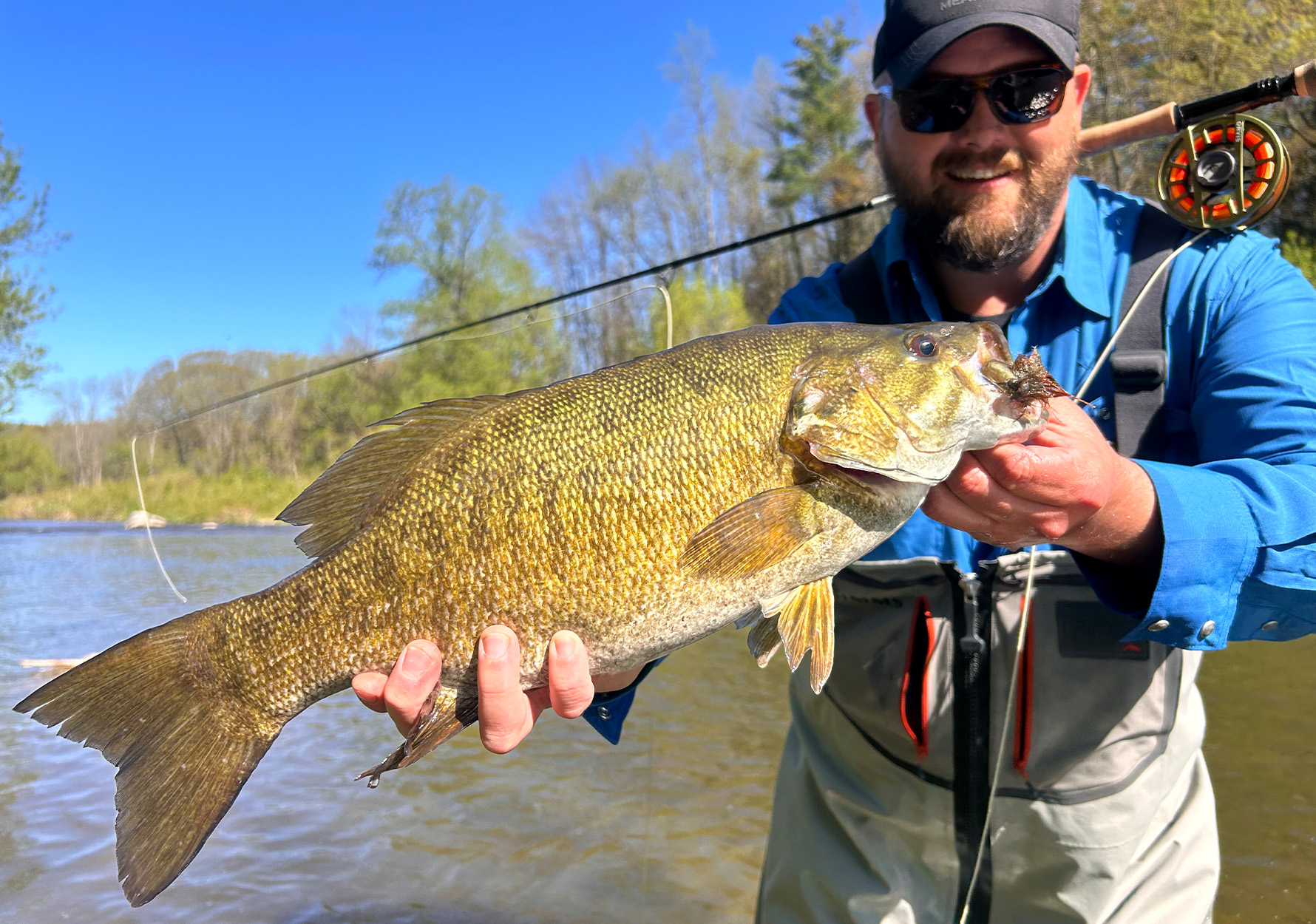Guide to Smallmouth Fishing in the Fall

Bass fishing is about as iconic a summer activity as eating hotdogs at baseball games and launching fireworks on the Fourth of July. It’s a time for warm, sunny days on the water, chucking baits and lures into the shallows, and ripping fat bass out of lily pads and from beneath boat docks. When the leaves begin to change though, and those first sparkles of frost appear on the early morning grass, most bass anglers put their equipment away for the year. This is a mistake, especially if you love to target smallmouth.
Because as water temperatures begin to cool, smallmouth bass become voracious. With winter looming, the fish move away from their summer haunts to deeper water where they start gorging themselves like loose pigs in a corncrib. It’s a time when the oldest and largest bronzebacks lose their inhibitions, and fishing for smallmouth in the fall can mean the bass of a lifetime — so long as you know where and how to fish for them.
Fish Soft Plastics and Flies in Early Fall
Spring and summer smallmouth typically congregate around rocky shoals, shady jetties, and shallow weed beds. But when fall weather drops water temps into the mid-60s, these fish transform into deep-water hunters. Roving like hungry jackals, smallmouth bass will move down and along drop-offs, hunting for the holdout crayfish, leeches, and insects along their way. Finding and catching these slowly dropping smallmouth means fishing transition zones.
Early autumn smallmouth will congregate and patrol along drop-offs that provide quick access to both shallower and deeper water. Rocky points, steep banks, and the edges of gravel and sandbars in 8 to 12 feet of water are all ideal areas to target, and these are the first places you should check when you see the leaves start to change. Depending on the style of fishing you like to do, you can work these spots effectively with either soft plastics or flies.
Gear anglers are going to want to use bottom-contact soft plastic baits that cause a lot of commotion and draw bass in from a distance. Large 1/4 ounce to 1/2 ounce jig head hooks tipped with creature baits like the Craw Papi and the Jumbo Leech are ideal for this type of fishing. Cast these baits down to the desired depth, letting them sink to the bottom, and then retrieve them with sharp, pulsing lifts that make the bait leap and dance along the bottom. Allow the bait to fall all the way back to the lake bed between lifts so that it can stir up sand and clack against rocks as you fish it, ringing the dinner bell for roving bass.
If you’re dealing with finicky bass or fishing during a sharp cold front, you can also have luck using a drop shot rig. Set it up by tying a 12 to 24 inch length of 6-lb fluorocarbon to your main line, leaving a 3- to 4-inch tag end off your knot, and then tie on a 1/4 ounce casting weight to the bottom of the line. Tie a size 4 to size 2 octopus hook to the tag end of the fluro and then hook a small soft plastic baitfish or leech, such as a Tiny Fluke or a Slug-Go, through its head. You can drop the rig vertically or cast it a short distance, letting it hit the bottom and then adding movement with quick rapid jigs until a smallmouth moves in to inhale the bait.
Read Next: The Best Bass Fishing Rods, Tested and Reviewed
Fly anglers can strip small, weighted streamers like Clouser Minnows and Conehead Wooly Buggers. Using a 9-foot leader on a floating or sink-tip fly line, cast the streamer along rocky drop offs and then let it sink to the bottom. Once it reaches the desired depth, start retrieving it with quick short strips so that the fly bounces and jigs as it moves up in the water column. If there are fish around, it usually won’t take long for a big smallie to track the fly down and crush it.
Cover Ground with Jerkbaits and Spinners in Late Fall
Fishing for smallmouth in the fall changes later in the season, as water temps drop below 60 degrees. This is typically when smallmouth will move off of structure and into deeper, open water. Patrolling depths of 10 to 20 feet, these bass will start keying in on suspended schools of baitfish like minnows, shad, and ciscoes. Catching them can be difficult as they are on the hunt and moving around constantly. Electronics on a boat can be a huge help during these situations as they can aid in locating both baitfish schools and the bass themselves. If your boat isn’t equipped, you can still find roving smallies by looking for surface activity.
On bright sunny days, schools of baitfish will move to the top of the water column to feed on phytoplankton. Pods of smallmouth will often linger just beneath these baitfish, waiting to rip through them like tuna feeding on herring. You can find these baitfish by scanning the surface of the water near rocky shorelines and sandy flats. Look for small, raindrop-like ripples on the surface of the water, or even frantic silvery splashes. Once you spot these schools of baitfish, the bass won’t be far away.
Whether you spot these surface schools or find bass on your sonar, covering water is still the name of the game for late-fall smallmouth fishing. Jerkbaits like the Husky Jerk and the X Rap are ideal for these situations as you can cast them a good distance and work them slowly back to the boat. If you’re completely blind-casting and need to cover more ground, it’s hard to beat a spinner. And I don’t mean the big, willow-bladed skirted spinnerbaits you use for bass during the summer. I’m talking about the smaller, inline spinners that are commonly used for panfish and trout.
Read Next: The Best Fish Finders of 2024: Forward Facing Sonar to Budget Options
Inline spinners like the Blue Fox Vibrax, Roostertail, and Panther Martin are autumn smallmouth magnets. Their subtle flash, vibration, and smaller profile make them ideal imitations of small baitfish that have gotten lost from the herd — something that a big smallie won’t be able to resist. You can fish these spinners quickly just under the surface, or let them sink and retrieve them slowly when bass are holding deep. They’re great lures for covering the entire water column and seeking out roving fish, and they can work well on sluggish bass that have been following but not committing to other baits.
Read the full article here







